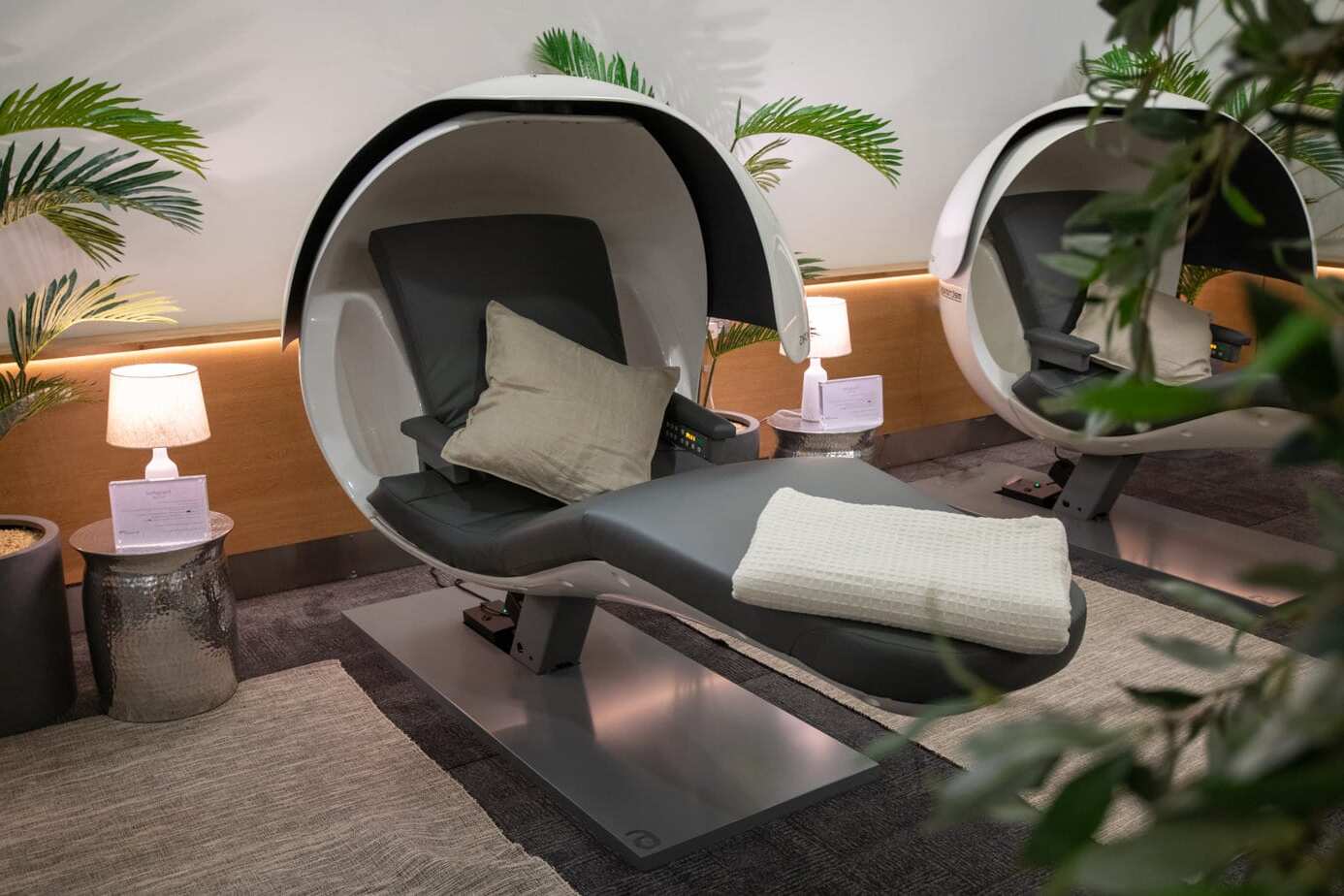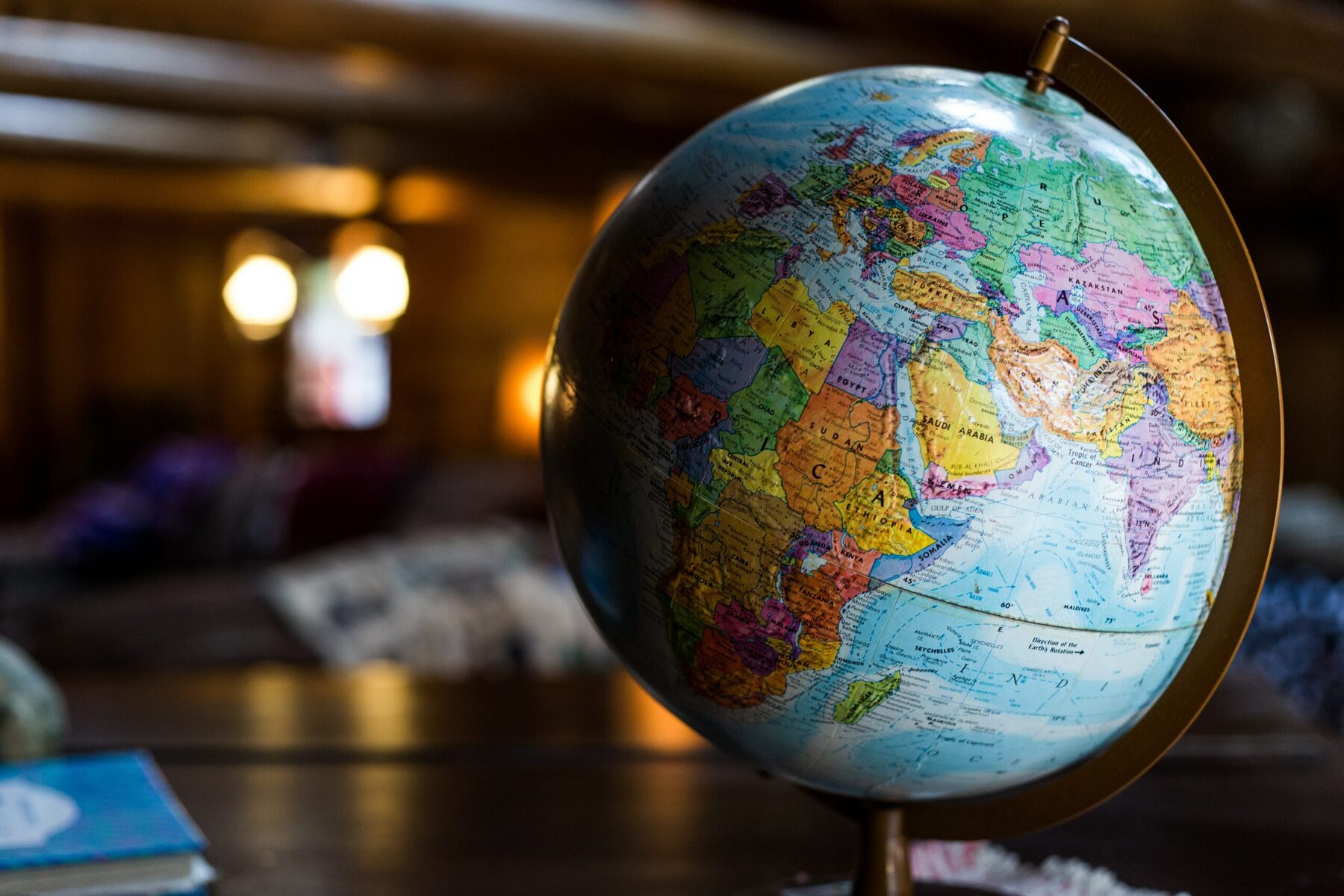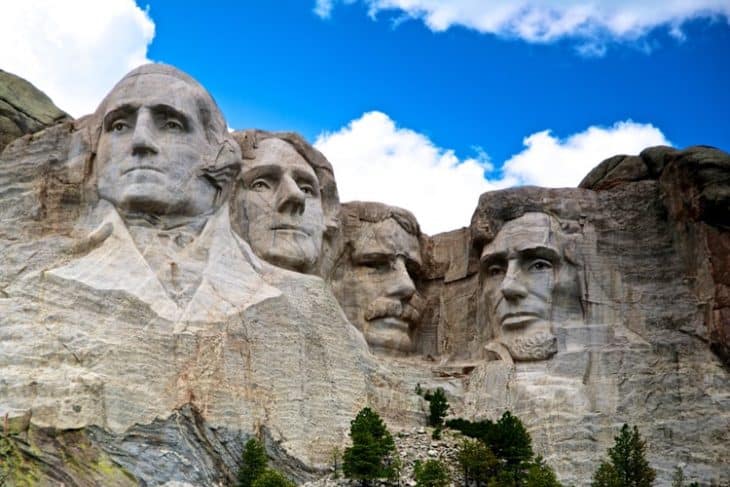
There is always more to a pretty face, especially those that are as big as the ones at Mount Rushmore. Have you ever wondered how those 4 faces made their way into that mountain? What is the story behind the place and the people behind it? You might be surprised, but Mount Rushmore is not your average tourist spot. But, be ready because these facts about Mount Rushmore is about to answer all the questions (and curiosities) that you have!
- Doane Robinson, a South Dakota historian, visualized the sculpture in 1923.
- His goal was for the state to gather more tourists.
- Master sculptor Gutzon Borglum considered the national focus of the monument, hence the chiseled faces of the presidents.
- Lakota called Borglum’s chosen carving mountain the ‘Six Grandfathers.’
- The mountain went by varied names like the Keystone Cliffs, Sugarloaf Mountain, Cougar Mountain, and Slaughterhouse Mountain.
- It was not until 1930 when the US Board on Geographic Names officially acknowledged the location as ‘Mount Rushmore.’
- The Mount Rushmore carving project commenced in 1927 and concluded in 1941.
- They chose George Washington (1789 – 1797) for being the nation’s ‘Founding Father.’
- Signing Louisiana Purchase and creating the Declaration of Independence earned Thomas Jefferson (1743–1826) his spot.
- Abraham Lincoln’s (1809–1865) leadership in the Civil War also made him worthy to be commemorated up there.
- The reason for choosing Theodore Roosevelt (1858–1919) was his role in the industrial development of the nation.
- More than 400 men formed the team who carved Mount Rushmore.
- The granite composition of Mount Rushmore is subject to erode about an inch per 10,000 years.
- Mount Rushmore lights up for two hours every night.
- Mount Rushmore’s annual visitors reach approximately 3 million.
- Each chiseled face of the presidents stands 60-feet high.
- There have been zero (0) recorded fatalities during the construction.
- The original plan for the figure meant for the presidents to be sculpted from head to waist.
- In sum, the project took 14 years to complete and had a total cost of $989,992.32.
- A prominent holy man from Lakota named Ben Black Elk personally welcomed Mount Rushmore visitors from the late 1950s up to the early 1970s.
The presidents were not the original faces of Mount Rushmore.
Whom Robinson originally had in mind were Western heroes like Red Cloud (Oglala Lakota leader), Buffalo Bill Cody (American soldier and showman) Lewis and Clark (expedition explorers). Also, he meant to have the sculptures on the Needles, the row of stone pinnacles just nearby.
Borglum aimed for something bigger than the Needles.
He was with Robinson in the goal of attracting more tourists, but Borglum wanted something that would pull people from all over the world. The sculptor wanted to carve something bigger – a mountain.
Before his enlistment on the Rushmore project, Borglum was working on another assignment.
The Danish-American sculptor was out in Georgia back then, operating in the large-scale carving at Stone Mountain. However, he believed that there were flaws in the model and that the monument would not be able to stand the test of time. Borglum was seeking an escape route right when he received a call from South Dakota.
Gutzon Borglum was a pupil of Auguste Rodin, a notable French artist.
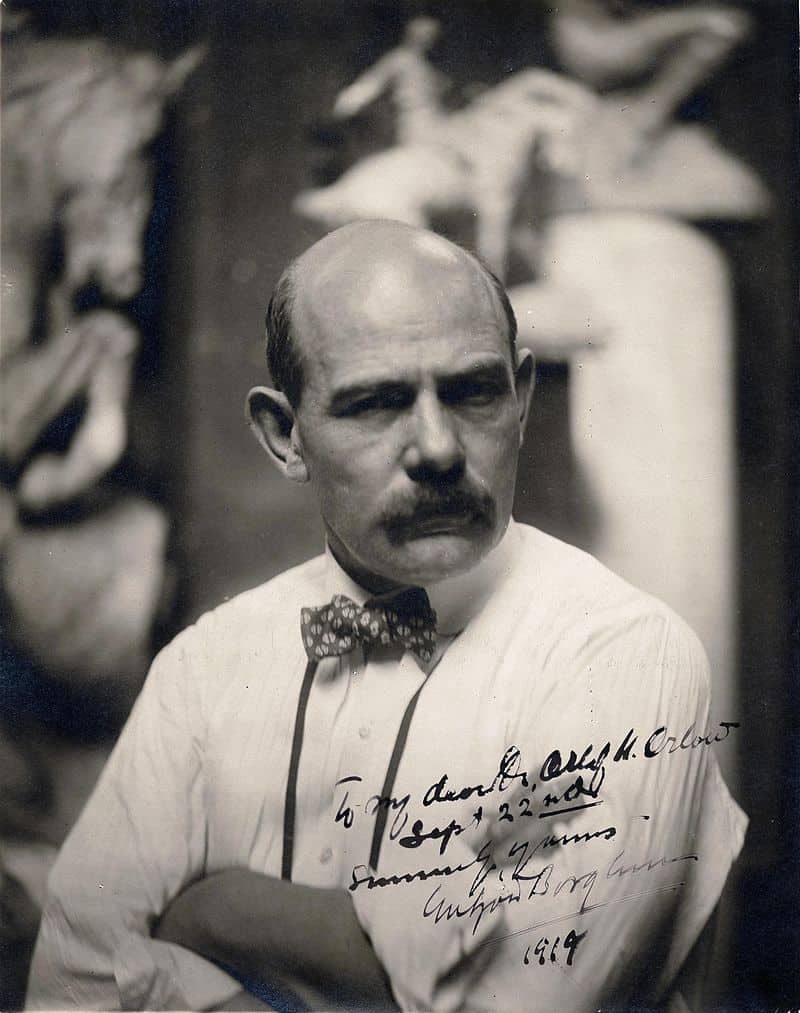 Even before Borglum considered Mount Rushmore, America already labeled him as one of the most successful artists in the U.S. He created Mares of Diomedes, the first American work that the New York Metropolitan Museum of Art curated. The U.S. Capitol Building also displays 5 of his statues.
Even before Borglum considered Mount Rushmore, America already labeled him as one of the most successful artists in the U.S. He created Mares of Diomedes, the first American work that the New York Metropolitan Museum of Art curated. The U.S. Capitol Building also displays 5 of his statues.
Eventually, their student-teacher relationship evolved into friendship down the road.
In the duration of the Mount Rushmore project, Borglum was often elsewhere.
He also worked on the Thomas Paine sculpture for Paris and the Woodrow Wilson sculpture for Poland. Meanwhile, his son Lincoln Borglum imposed the supervision on the Rushmore project in his absence.
The Mount Rushmore sculptor was known for being temperamental.
Borglum had unpredictable mood swings and a habit of firing and rehiring people. Some even say that he was a man with whom working is difficult.
Workers call him “the Old Man.”
Not for his age but for his demeanor, rather. Even his secretary has lost track of how many times he had fired-rehired her, estimating it to about 17 times.
Still, Mount Rushmore would not be what it is now without Borglum’s enthusiasm and persistence despite trials and funding issues.
The Mount Rushmore workers hiked up the mountain with another thing in mind.
They were miners who sought gold in the Black Hills. While they were not naturally artists, their knowledge of how to use dynamite and jackhammers became useful for the work at hand.
The Borglum father-and-son hired an artist, but the partnership did not work out.
Polish-American artist Korczak Ziolkowski served as an assistant on the mountain. However, he had a heated argument with the Borglum son just 19 days in the job.
Ziolkowski immediately left the project to start his own neighboring mountain carving Crazy Horse Memorial, the largest mountain sculpture in-progress in the world today.
President Franklin Roosevelt ordered Mount Rushmore under National Park Service jurisdiction.
He signed the Executive Order 6166 in 1933, a change that enraged Borglum. The sculptor despised being under the “watchful eye of the government.”
Borglum was not able to see the completion of Mount Rushmore.
At age 73, he underwent prostate surgery in February 1941. Unfortunately, a blood clot ended it for the sculptor in Chicago in March 1941, just three weeks after the procedure.
Borglum Jr. took over the project.
Since Mount Rushmore was not yet finished, Lincoln Borglum took the matter to his hands until its completion. The project was completed in October of the same year as his father’s death.
Sadly, the Mount Rushmore project had adverse effects on the worker’s health.
In the duration of their work on the Black Hills, many of them breathed in silica dust. This incident then caused them to die from lung disease silicosis later on.
Mount Rushmore stands at a mighty height of 1,745 metres (5,725 feet) above sea level.
Aside from its altitude, there were other reasons why this magnificent location was handpicked. Mount Rushmore boasts of its high-grade granite and its supreme sun exposure, thanks to its southeast-facing stance.
Borglum used a 1:12 scale model as a basis for the final sculpture.
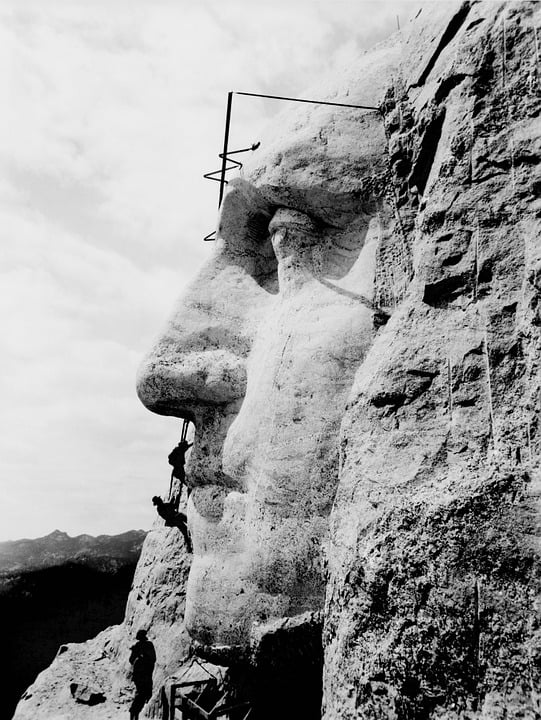
He also designed a complex ‘pointing machine’ to map out the image of the sculpture onto the face of the mountain.
Borglum had to alter his scale model 9 times in the duration of the mountain carving.
Like the practice of many sculptors, the Mount Rushmore master sculptor formed his plans with a plaster material first. Imagine having to make the changes on the actual humongous mountain, right?
Dynamite made 90% of the mountain carving.
After that, the workers moved over 450,000 tons of rock from the exterior. They also did fine carving on the surface until it was as smooth as that of a concrete sidewalk.
The schedule for detonating dynamites is every lunch breaks and evenings.
These times are when all the workers are safely away from the mountain.
Workers face life-threatening procedures every day.
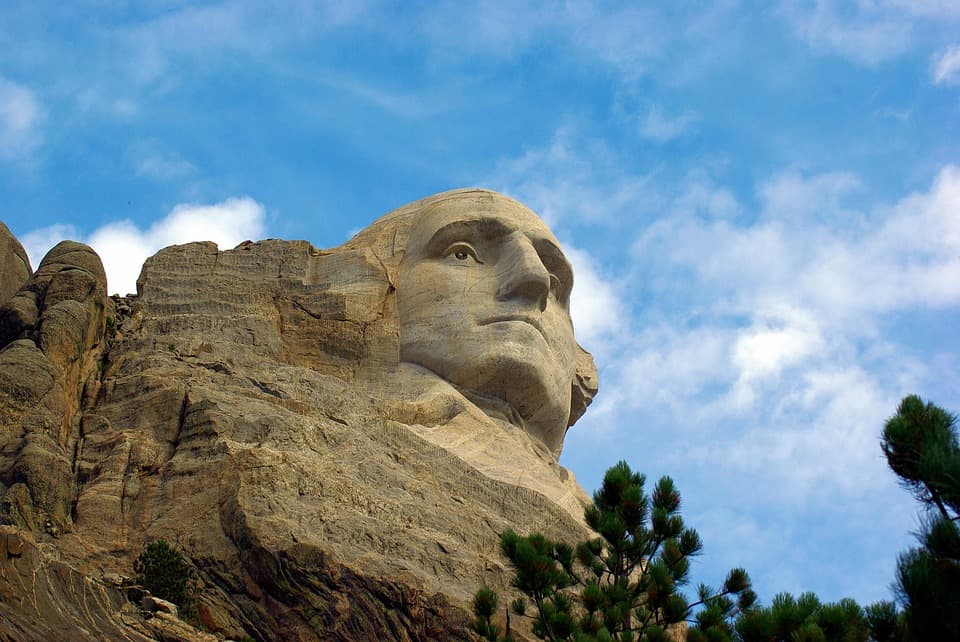 Some of them are stationed on the top where they lower drillers and finishers in bosun chairs down to 500 feet. Steel cables that are ⅜ inches thick held onto the chairs which requires hand cranking on winches at the top.
Some of them are stationed on the top where they lower drillers and finishers in bosun chairs down to 500 feet. Steel cables that are ⅜ inches thick held onto the chairs which requires hand cranking on winches at the top.
However, the lowered men in bosun chairs might be hauled up the mountain on their faces if their partners cranked too fast.
They hired young boys as their ‘call boys.’
All the youngins have to do is sit on the mountainsides and yell messages back and forth. The operators could then know when to speed up or slow down, easily and safely.
Gutzon Borglum had an elaborate plan for a historical chamber situated behind Lincoln’s head.
He wanted to build a secret vault and dedicate it to the history of the United States. As per the reports from the National Park Service, Borglum also planned to add America’s written history alongside the 4 heads on the mountain.
The entrance would have an 800-foot stairway and a 38-foot-winged bronze eagle sculpture would guard it on the top.
The sculptor secretly started blasting his ‘Hall of Records’ in 1938.
Borglum’s Hall of Records was supposed to be a vault to keep the nation’s history and essential documents such as the Constitution. Its walls would bear the most important events in America from 1776 to 1906.
Moreover, more sculpted busts of famous Americans would line up in the hall together with lists of American contributions to science, art, and industry.
Eventually, Congress discovered Borglum’s little hidden project.
They demanded Borglum to only use the funds of the federation exclusively for the faces and not for the Hall of Records. Hesitantly, the sculptor halted his works on the hall in 1939 with a pledge to complete it anyway.
It was in that same year when the last face, Roosevelt’s, was completed.
Borglum’s concept for the Hall of Records only became reality in 1998, 57 years after his death.
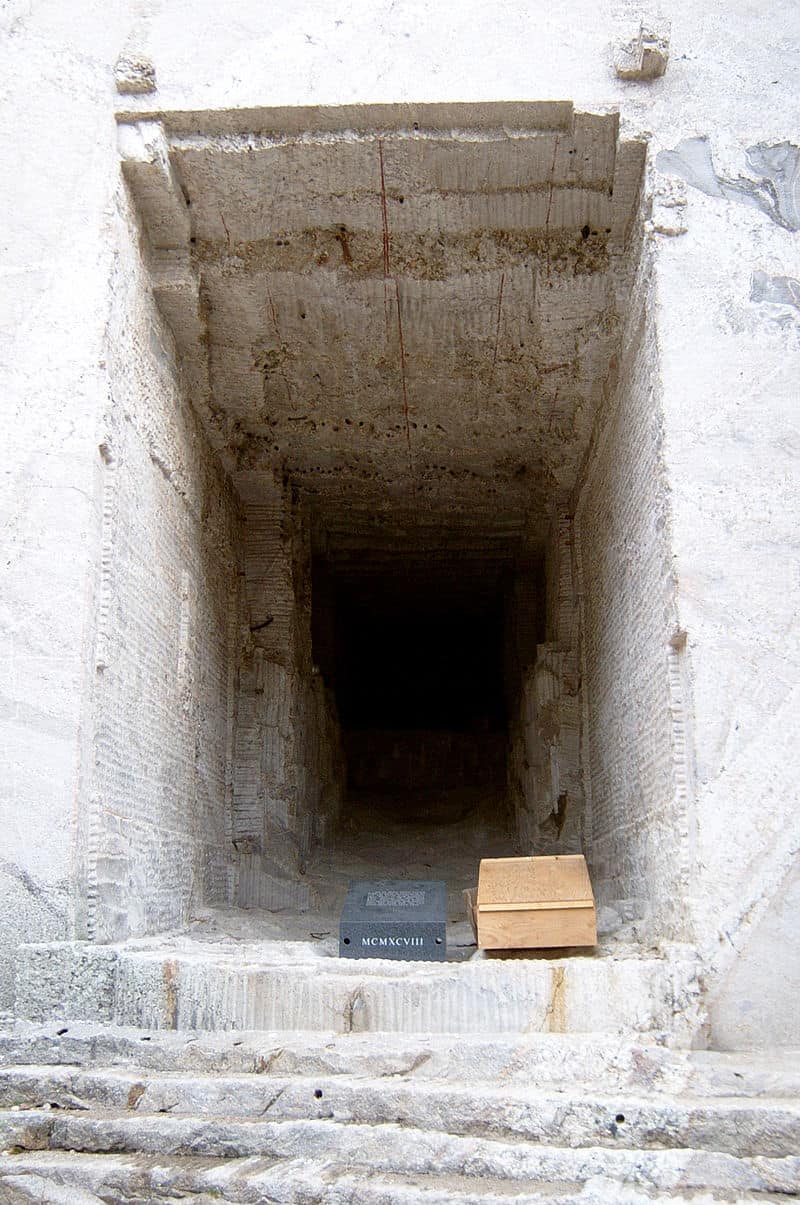 The hall, despite being ‘unfinished,’ was then filled with porcelain tablets of text and images from the Constitution, the Bill of Rights, and the Declaration of Independence.
The hall, despite being ‘unfinished,’ was then filled with porcelain tablets of text and images from the Constitution, the Bill of Rights, and the Declaration of Independence.
Along with the vault-sealed pillars are the biographies of the presidents and even that of Borglum.
Supposedly, a panel of gilded letters was meant to brand famous U.S. territorial acquisitions.
However, there were not enough funds for any more enhancements for the monument. They held the declaration of completion on October 31, 1941, and the 8-foot-tall letters did not happen even after that.
Each of the presidential noses is around 240 inches long.
Given the current erosion rate, each of them could last as long as 2.4 million years in advance of their total wear-away. However, the faces are most likely to lose some of their outlines after around 500,000 years.
The basic shape of the heads might still stand even up to 7 million years at this rate.
The original illumination used for Mount Rushmore had a potentially harmful impact on the natural environment.
Hence, authorities installed a new and advanced LED lighting system in 2015. They aimed to minimize the negative effects without totally sacrificing the lighting of Mount Rushmore.
Numerous preservation efforts were served for Mount Rushmore.
Among them is the installation of 8,000 feet long camouflaged copper wire in 1988. It helped control 144 observed hairline cracks.
In 2009, the copper wires were substituted with fiber optic cables.
Mount Rushmore undergoes annual monitoring and crack-sealing for maintenance purposes.
Only trained mountain climbers are licensed to do the job. Meanwhile, the limited budget could not cover the regular cleaning needed for eliminating lichens.
Mount Rushmore is now on its 92nd year.
Thanks to the efforts for preservation, the monument is still intact with all four foreheads, noses, and chins, together with the eight eyes, ears, nostrils and lips.
The presidents were not chosen randomly.
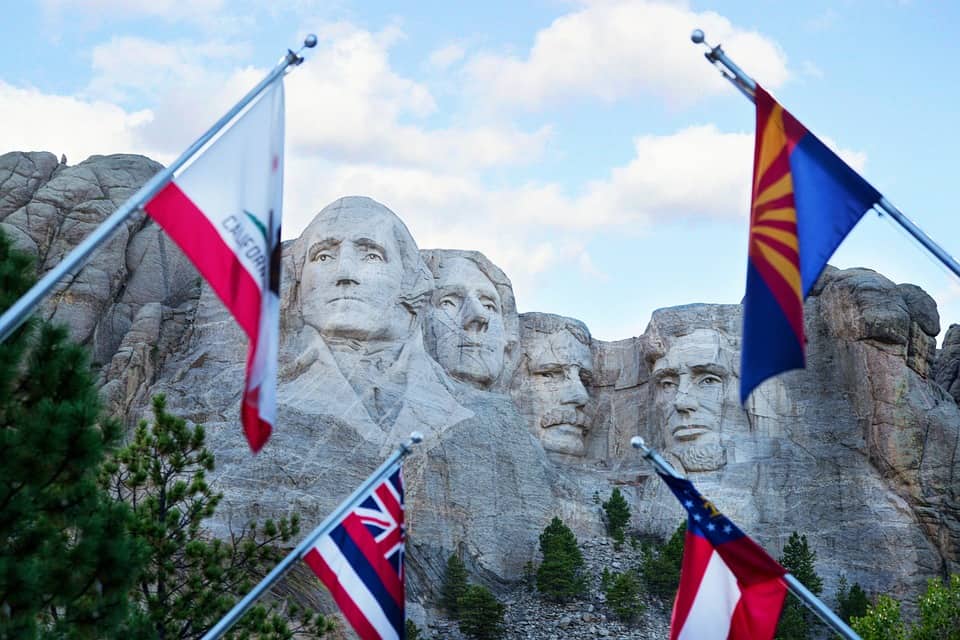 The standards for choosing the presidents were the significance of their contribution to the establishment (Washington), development (Roosevelt), growth (Jefferson) and preservation (Lincoln) of the country.
The standards for choosing the presidents were the significance of their contribution to the establishment (Washington), development (Roosevelt), growth (Jefferson) and preservation (Lincoln) of the country.
Mount Rushmore was named after Atty. Charles E. Rushmore.
This New York lawyer went to survey gold claims around the area in 1885. It only took a question when he asked his guide William Challis, “What’s the name of that mountain?” Challis answered, “It’s never had one…till now…we’ll call the damn thing Rushmore.”
Atty. Charles E. Rushmore donated $5000 meant for the carving of the mountain that bore his name.
The amount that he gave to help in the Mount Rushmore sculpture became one of the first private donations for the project.
The initial estimation stated that the actual carving would only last 6 years.
However, it ended up enduring 8.5 years more due to weather-related delays and insufficiency of funds.
Preparations for the Mount Rushmore project included wooing President Calvin Coolidge.
The president spent his summer 1920 in the Black Hills where locals came up with passionately creative ways to give him a comfortable stay. Some of the gifts that they presented are a giant butter tub and a 10-gallon hat.
They also dropped a flower wreath by plane at Coolidge’s lodge and stocked the creek with brooder-fattened trout so he could fish conveniently.
Mount Rushmore added more visitor-friendly facilities over the years.
Tourists can now have more to do than taking pictures with the four heads. They can also stop by the visitor center, the Presidential Trail, and the Lincoln Borglum Museum.
Another spectacle is the Sculptor’s Studio, the same location where Gutzon Borglum built the scale models of the mountain carving.
The Grand View Terrace is situated directly above the museum.
It stands at the end of the Avenue of Flags which showcases each flag of the 50 states, 1 district, 2 commonwealths and 3 territories of the United States of America.
The Presidential Trail is a walking trail stretch of 0.5 miles.
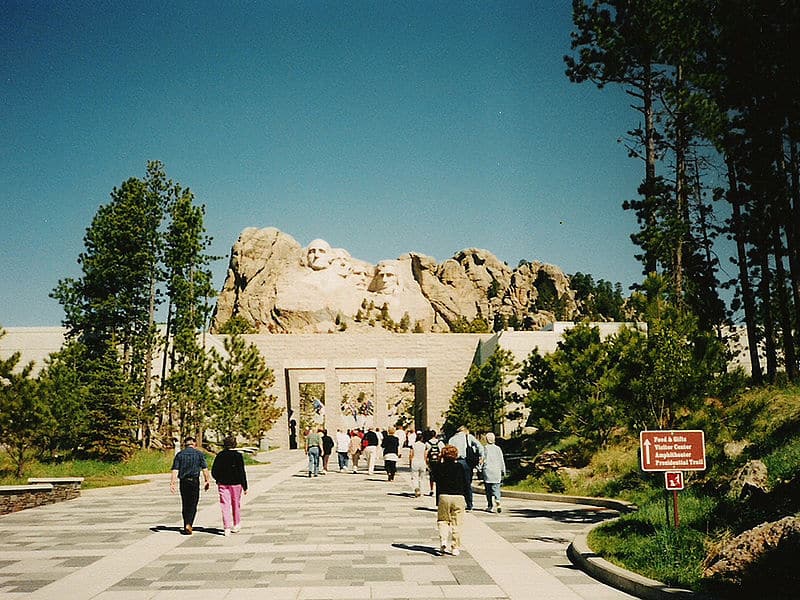 Said to be the best viewing spot for the chiseled faces, the trail allows a much closer sight and different angles of each face. While the trail would have 422 stair steps from the Sculptor’s Studio, it would be easier to traverse from the Grand View Terrace.
Said to be the best viewing spot for the chiseled faces, the trail allows a much closer sight and different angles of each face. While the trail would have 422 stair steps from the Sculptor’s Studio, it would be easier to traverse from the Grand View Terrace.
A walk in the looping base of the mountain leads to a lesser-known worthwhile trail.
It is true that the Grand View Terrace and the President’s Trail are crowd favorites, but there is more than that. Try a different path and climb the steps into the ponderosa pines.
This route offers a closer observation of the faces with a chance of a mule deer or Rocky Mountain goat.
The Mount Rushmore National Memorials holds evening programs and lighting ceremonies.
However, these are only seasonal offers that are available between mid-May and September.
June, July, and August are the busiest months of the memorial.
Meanwhile, May, September, and October are the least busy ones. That is why these months are the most popular visiting months.
Jefferson’s head was supposed to be on the right side of Washington’s.
It was already 2 years in the making when they found that the rock on that part is unsuitable. Hence, they had to ‘erase’ the partially chiseled face by blasting the mountainside with dynamite.
They continued with Washington’s face and completed it in 1934.
Following that was Jefferson’s in 1936 and Lincoln’s in 1937.
The addition of Roosevelt’s face sparked controversy.
Some people think that the 26th president did not deserve that spot on the mountain due to varied political and ethical reasons. In another account, Roosevelt died 8 years shy of the initiation of the blasting.
Theodore Roosevelt’s carved head is not wearing any glasses.
However, you might be fooled into thinking that he does because of the striking optical illusion and sculptural trick at work. A look from afar would give the impression that the president is sporting a pair of specs.
The truth is that the ridges on his upper cheeks are carved with the pince-nez, no lenses nor earpieces needed, and the look is complete.
The height of the president’s heads is each equivalent to the altitude of a 6-story building.
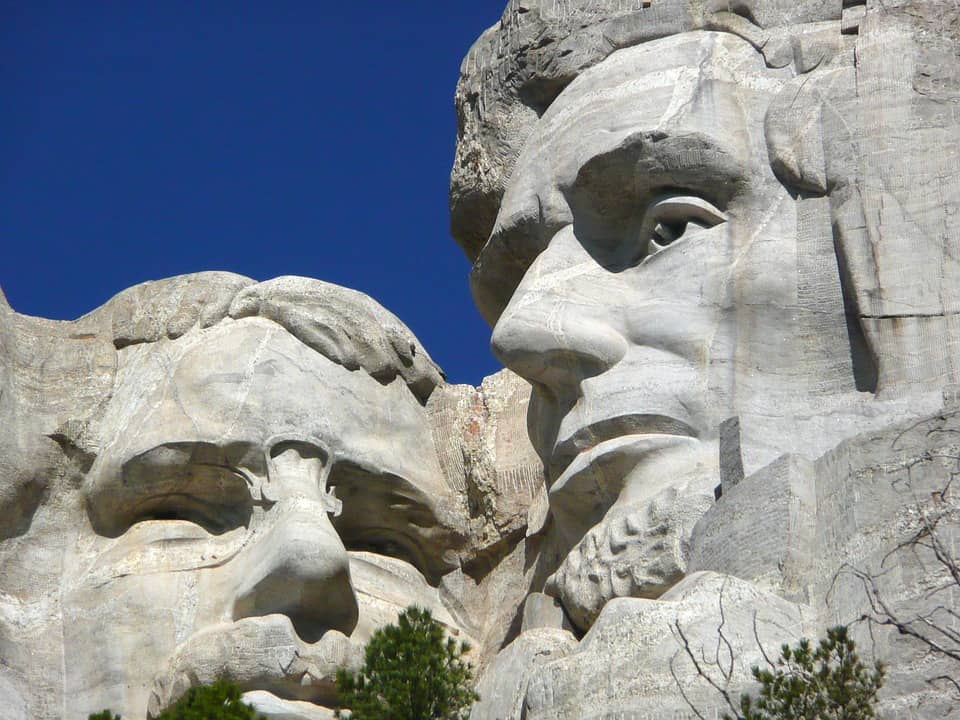 Their eyes are open 3.3 metres wide, while their mouths are gaping at 5.5 metres. On the other hand, their noses stand 6 metres long.
Their eyes are open 3.3 metres wide, while their mouths are gaping at 5.5 metres. On the other hand, their noses stand 6 metres long.
George Washington’s face has the longest carved nose.
It exceeded others by 1 foot, totaling 21 feet, or 6.3 metres from bottom to top.
A bill to add a fifth face was presented to Congress in 1937.
Petitioners wanted to have the image of Susan B. Anthony carved alongside the 4 presidents. She was a notable leader of the women’s rights movement.
However, Congress passed a bill stating that only the partially completed heads shall be completed.
Mount Rushmore caters to resident mountain goats.
This herd descended the lot that Canada gifted to Custer State Park in 1924. Clearly, the naughty goats are escapees.
Sometimes, Google Maps gets the location of Mount Rushmore wrong.
A general search for the memorial has guided travelers astray one too many times already. One time, a tourist was led to Methodist campground ‘Storm Mountain Center’ which was around 12 miles off the mountain.
An amateur baseball team used to represent Mount Rushmore.
The Borglums’ competitive egos compelled the 2 to hire young men for their sporty skills instead of choosing those with relevant skills.
Be that as it may, Team Rushmore placed second at the amateur baseball tournament in South Dakota.
Mount Rushmore as an iconic symbol of the U.S. rose to fame in various works of art and literature.
Artists of all types of crafts have discussed, illustrated or depicted the memorial in popular pieces. Common references portray the location as a secret location cover-up where the faces were either altered, removed or even parodied.
The Hall of Records starred in a film.
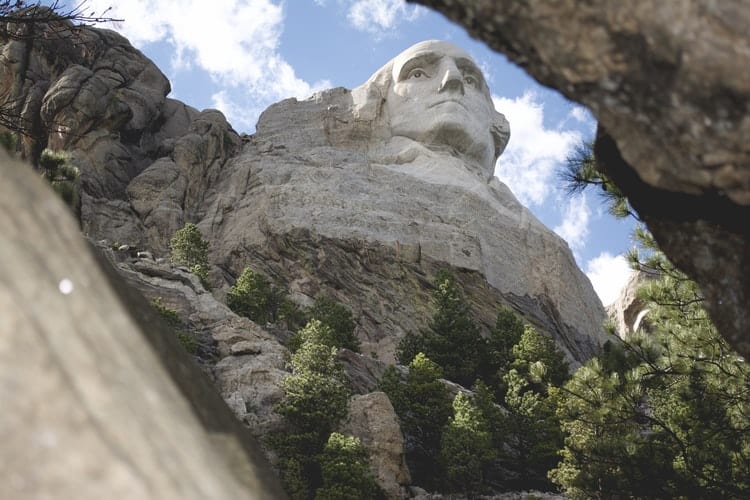 2007 film National Treasure: Book of Secrets had its setting on the memorial. It stars the actor Nicolas Cage.
2007 film National Treasure: Book of Secrets had its setting on the memorial. It stars the actor Nicolas Cage.
Another famous movie appearance for the memorial is the 1959 film North by Northwest.
Actor Alfred Hitchcock shot his thrilling chase scene in the location but had to film the rest on a Hollywood set.
When authorities caught wind that the scenes involved fights and deaths, they immediately banned the crew’s filming.
Mount Rushmore has a Japanese version.
In the anime Naruto, the memorial is called The Hokage Rock which overlooks the city of Konohagakure. The faces carved into the series’ mountains are those of the Hokages.
What creator Hashirama Senju wanted to achieve was an allegory that the Hokage would always watch and protect the village.
Some people believe that there are other faces on the mountain aside from the big four.
They claim that there is an elephant stone face on Lincoln’s right. Meanwhile, others suggest looking at a 90-degree tilted image of the mountain as doing so was said to expose another face.
Aside from tourist visits, Mount Rushmore also witnessed protests.
The Fort Laramie Treaty of 1868 labeled Mount Rushmore as Sioux territory. However, the mountain was a painful reminder of violated agreements and mistreatment history for the Native American protesters.
The faces of the men commemorated on the monument only worsened the situation.
The Sioux Nation won their court case against the federal government in 1980.
Not only did the natives settle the ownership rights over the mountain, but they also earned big compensation. They were meant to receive $15.5 million land settlement as well as the annual 5% interest rate to make up for the more than 100-year old unsettled debt.
Nevermind the total amount; the natives rejected the payment offer.
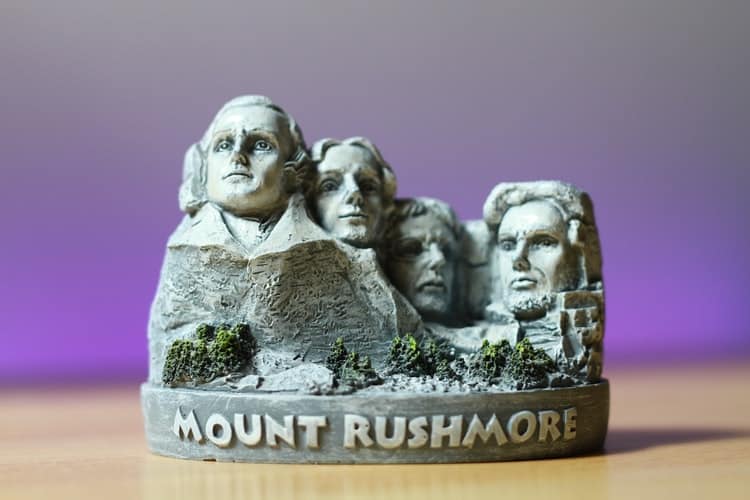 The figures would have accumulated up to $100 million in a few years, but the Sioux Nation wanted the land’s title deeds instead.
The figures would have accumulated up to $100 million in a few years, but the Sioux Nation wanted the land’s title deeds instead.
Unfortunately, the case did not reach that resolution despite other tribes claiming attempts on the 9-figure offer.
The U.S. Post Office issued a commemorative stamp, Mount Rushmore edition on August 11, 1952.
It was in recognition of the 25th year of the Mount Rushmore in the South Dakota Black Hills. Later on January 2, 1974, a 26-cents airmail seal branding the monument was also released.
Was this page helpful?
Our commitment to delivering trustworthy and engaging content is at the heart of what we do. Each fact on our site is contributed by real users like you, bringing a wealth of diverse insights and information. To ensure the highest standards of accuracy and reliability, our dedicated editors meticulously review each submission. This process guarantees that the facts we share are not only fascinating but also credible. Trust in our commitment to quality and authenticity as you explore and learn with us.

